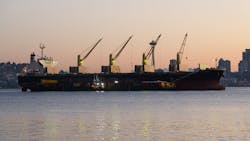Five Ways Manufacturers Can Prepare Now for a Changing Tariff Landscape
Trade policy promises to be high on President-elect Donald J. Trump’s list of things to do when he enters office early next year. Tariffs, most notably aimed at China, were a key talking point during his campaign and an issue with potentially huge consequences for manufacturers.
That said, many unknowns remain: What kinds of tariffs? When? What products will be targeted? Will China be the only country under a microscope?
Despite the many unknowns, manufacturers can do some prep work now to react more swiftly and smartly once the tariff landscape becomes clearer.
Here are a few of the suggestions offered by Jeremy Tancredi, partner in West Monroe's supply chain practice; Dan Swartz, international tax services principal, Crowe; and Gregory Husisian, partner at Foley & Lardner LLP, during IndustryWeek’s latest Production Pulse. Watch the full presentation for greater detail on these takeaways and additional suggestions.
Thoroughly review your supply base. While such advice may seem self-evident with Tier 1 suppliers, it extends to Tier 2 and Tier 3 suppliers as well. “Any tariffs that impact those suppliers are going to filter back to the end manufacturer consumer,” explains Tancredi.
Risk planning starts with China and Mexico. Husisian advises manufacturers to pull their ACE data from the U.S. Customs and Border Protection portal to gain a good understanding of tariff risk and exposure, “particularly with regard to China and Mexico.” While he cites China for obvious reasons, Mexico should also be at the top of risk planning because USMCA is up for reapproval in 2026. “That makes [Mexico] a potential source of higher tariffs even if it's as part of a threat to achieve other goals, such as on immigration,” Husisian says.
Find out who your customs broker or bond broker is. It’s going to be one of the most important relationships you have, says Crowe’s Swartz. As tariffs increase, “your bond limit is going to have to follow. And as the bond limit climbs higher, the underwriters of the bond are now going to pay more scrutiny to your company. They're going to be wanting to look at audited financial statements and, in many cases, they’re going to require that you put up collateral in the form of letter of credit.”
Don’t overreact by purchasing mass quantities of materials to get ahead of tariffs. Not only is it disruptive to your supply chain, but an overabundance of materials can lead to storage issues, production issues and a lot of excess inventory, which can be very costly. Moreover, such activity is already starting to drive up transportation costs, notes Tancredi.
“Any savings you could see getting ahead of some of these tariffs, you could be offsetting those by higher transportation costs,” he says.
Be wary of too-good-to-be-true promises. “If you see companies advertising that they can take your cargo through an intermediate country and slap a ‘made in Malaysia’ sticker on it when it's actually produced in China … not a good route to go,” Swartz says.
Watch the full presentation Preparing for Trump to Shift the Manufacturing Trade Environment (Production Pulse).
About the Author
Jill Jusko
Bio: Jill Jusko is executive editor for IndustryWeek. She has been writing about manufacturing operations leadership for more than 20 years. Her coverage spotlights companies that are in pursuit of world-class results in quality, productivity, cost and other benchmarks by implementing the latest continuous improvement and lean/Six-Sigma strategies. Jill also coordinates IndustryWeek’s Best Plants Awards Program, which annually salutes the leading manufacturing facilities in North America.
Have a story idea? Send it to [email protected].

